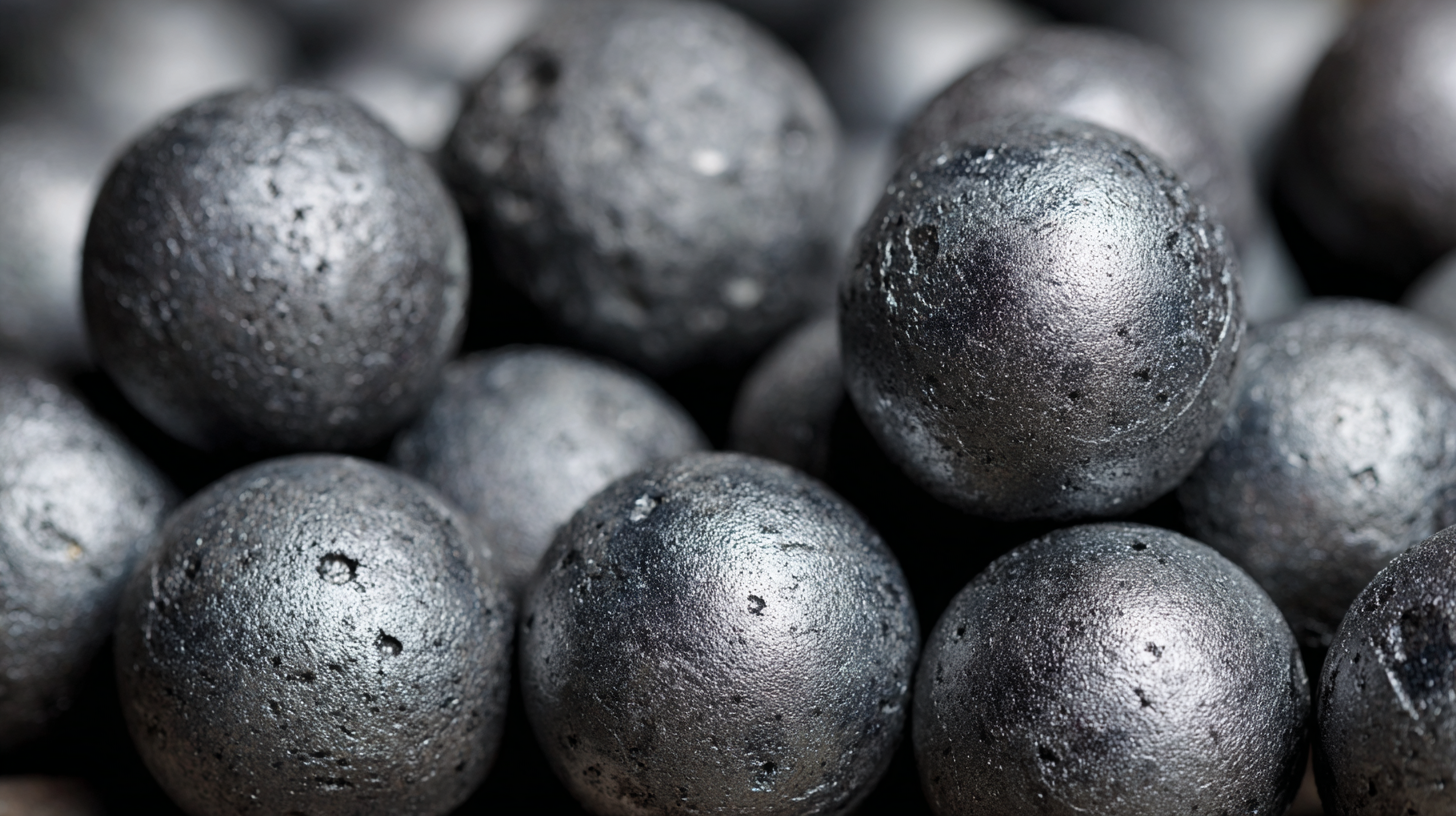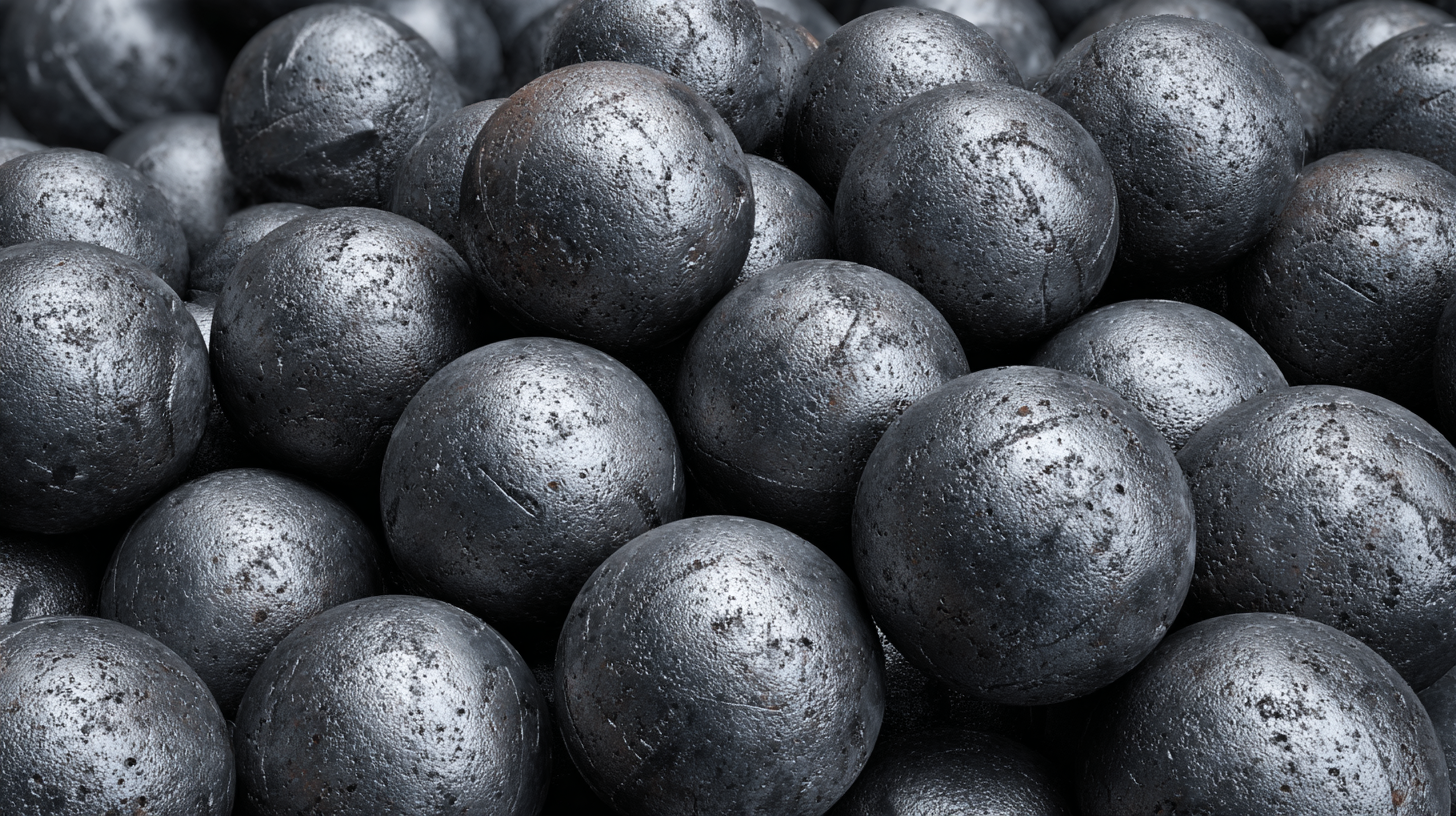
In today's rapidly evolving industrial landscape, the significance of choosing the right materials for manufacturing processes cannot be overstated. Among the myriad of options available, carbon steel balls emerge as a vital component, offering exceptional benefits across various applications.

With a perfect balance of strength, durability, and cost-effectiveness, carbon steel balls are increasingly becoming the material of choice for industries ranging from automotive to aerospace. As we look towards 2025, understanding the advantages of utilizing the best carbon steel balls is essential. Not only do they enhance operational efficiency and product reliability, but their versatility also opens doors to innovative uses in emerging technologies.
This blog delves into the compelling reasons why industries ought to make the switch to carbon steel balls, highlighting their unparalleled performance and the transformative impact they can have on industrial applications.
When considering materials for industrial applications,
carbon steel balls stand out due to their unique properties and benefits.
These balls are known for their excellent wear resistance and durability, making them ideal for various machinery and equipment.
Their superior hardness allows them to maintain their shape and functional integrity even under heavy loads,
which is critical in high-stress environments.
Tips for selecting the best carbon steel balls include assessing the specific requirements of your application,
such as load capacity and environmental conditions. Additionally, ensure you choose a reputable supplier that can provide balls
that meet industry standards for quality and performance.
Regular maintenance and inspection of these components can further enhance their lifespan and efficiency in industrial settings.
Another key advantage of carbon steel balls is their cost-effectiveness.
With their ability to reduce friction and increase efficiency in machinery,
they can lead to significant savings on energy costs over time.
When implementing carbon steel balls in your operations, consider optimizing their arrangement in the system
to achieve the best performance results. Engaging in continuous monitoring can also help identify any potential issues
before they escalate into costly repairs.

When selecting carbon steel balls for industrial applications, several essential factors must be considered to ensure optimal performance and durability. The hardness of the steel, often measured on the Rockwell scale, is a critical metric; for instance, carbon steel balls typically range from 60 to 66 HRC. This hardness level is crucial for applications that require resistance to wear and deformation, such as in machinery bearings and grinding applications. According to the International Journal of Material Science, higher hardness levels can improve fatigue strength, which can extend the lifespan of the components significantly.

Another important factor is the manufacturing process. Carbon steel balls can be produced through different methods, including cold heading and forging. Cold heading provides a more uniform grain structure, resulting in improved mechanical properties. A report from the Society of Manufacturing Engineers indicates that the quality of the manufacturing process directly impacts the performance; balls produced with precision standards can reduce the risk of failure in high-load situations. Additionally, the surface finish of the balls should not be overlooked, as smoother surfaces can minimize the friction coefficient, leading to better efficiency in operational environments.
When it comes to ensuring the longevity of carbon steel balls in industrial applications, proper maintenance is essential. According to a report by the American Society of Mechanical Engineers (ASME), regular inspections and timely replacements can enhance the lifespan of carbon steel balls by up to 30%. This not only minimizes operational disruptions but also reduces overall costs related to equipment failures.
One effective maintenance tip is to keep the carbon steel balls clean and free from contaminants. The presence of dirt and debris can lead to accelerated wear and tear. Studies published in the Journal of Materials Processing Technology suggest that routine cleaning can significantly decrease the friction levels, thereby enhancing performance and durability. Additionally, implementing a regular lubrication schedule, using high-quality lubricants, can help in forming a protective barrier that prevents corrosion, further extending the operational life of carbon steel balls. Adhering to these maintenance practices can yield substantial benefits, optimizing both efficiency and productivity in industrial settings.
This chart illustrates the benefits of using high-quality carbon steel balls in various industrial applications, focusing on their performance, maintenance tips, and lifespan. The data highlights key advantages such as durability, resistance to wear, and cost-effectiveness over time.
Carbon steel balls are widely utilized across various industries due to their strength and durability. One of the most common applications can be found in the automotive industry, where these balls are used in bearings and valve seats. Their high load-bearing capacity and resistance to wear maximize operational efficiency, ensuring vehicles perform optimally under demanding conditions. Additionally, carbon steel balls also play a crucial role in machinery where precision and reliability are paramount, providing consistent performance over time.
In the manufacturing sector, carbon steel balls are often employed in conveyor systems and ball mills. In conveyor systems, they facilitate smooth movement of materials, enhancing productivity and reducing downtime. In ball mills, they are essential for grinding and mixing materials, contributing to the creation of high-quality finished products. Furthermore, their use in the aerospace industry is noteworthy, where they aid in the development of components that require precise engineering, stability, and resilience to extreme conditions. The versatility of carbon steel balls makes them an integral part of numerous industrial applications, offering unmatched performance across the board.
| Industry | Application | Benefits of Carbon Steel Balls |
|---|---|---|
| Manufacturing | Ball Bearings | High strength, durability, and cost-effectiveness. |
| Aerospace | Precision Components | Lightweight yet strong, ensuring high performance in critical applications. |
| Automotive | Transmission Systems | Enhanced wear resistance and reliability under high loads. |
| Oil & Gas | Valves and Pumps | Resistant to extreme conditions, providing longevity and reduced downtime. |
| Food Processing | Sorting and Conveying Equipment | Corrosion resistance when properly treated, ensuring food safety. |
When considering materials for industrial applications, cost-effectiveness is a crucial aspect, and carbon steel balls stand out as an advantageous option. Compared to alternatives such as stainless steel or ceramic balls, carbon steel balls typically offer a lower initial purchase price while providing comparable performance in many environments. This allows businesses to allocate resources more efficiently, freeing up capital for other important projects or investments.
Additionally, the durability and longevity of carbon steel balls contribute significantly to their cost-effectiveness. They are designed to withstand high levels of stress and friction, which means that fewer replacements are needed over time compared to their more expensive counterparts. As a result, companies can benefit not only from immediate savings but also from reduced maintenance costs in the long run. Choosing carbon steel balls can lead to enhanced operation efficiency without sacrificing quality, making them a smart investment for industrial applications.
